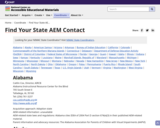
This website provide a list of all the AEM State Contacts in the United States.
- Subject:
- Education
- Special Education
- Material Type:
- Primary Source
- Author:
- CAST
- Date Added:
- 08/04/2022

This website provide a list of all the AEM State Contacts in the United States.
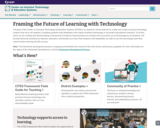
Framing the Future of Learning with Technology
The goal of the Center on Inclusive Technology & Education Systems (CITES) is to empower school districts to create and sustain inclusive technology systems that serve all students, including students with disabilities who require assistive technology or accessible educational materials. To do this work, we are creating and disseminating a framework of evidence-based practices to enhance the successful use of technology by all students. We provide technical assistance to districts, educators, and families to ensure that students with disabilities are able to use the technology tools they need to foster learning and life success.
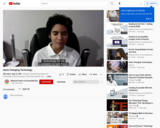
Students describe the impact of technology on their learning. They share specific examples of accessibility tools and highlight how each has supported their engagement and learning in school in powerful ways. This video is a great tool for highlighting the importance of making sure that instructional materials are accessible to all students. It is easier to ask instructional material providers before adopting curriculum rather than trying to retrofit materials (if that is even possible) after adopting materials.
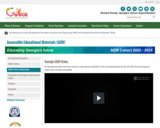
Georgia AEM Vision
All Georgia students will have access to educational materials in the most appropriate format and with the technology to make those formats accessible.
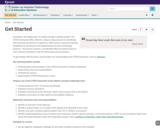
Get Started
Sometimes the hardest part of making change is getting started. The CITES framework offers districts a step-by-step process for identifying and removing any barriers to student or staff success caused by learning disabilities by planning for and implementing inclusive technology practices. The process requires a coordinated effort by district teams to move forward seamlessly with the framework and its practices.
To get started with the terms and concepts we use throughout the CITES framework, visit our Glossary.

On Thursday, March 9th, in celebration of Open Education Week, the #GoOpen National Network presented the session, OER & Digital Accessibility, featuring Cynthia Curry of the National Center on Accessible Educational Materials for Learning (AEM Center) at CAST, in conversation with Vanessa Clark, Aujalee Moore, and Matt Hiefield of the Oregon Department of Education, and facilitated by Amee Evans Godwin of ISKME and #GoOpen.Learn more about accessibility and open educational resources (OER), including shared definitions, benefits, guidelines, and implementations so that educators can better support learners with disabilities and learning preferences.
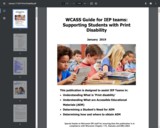
This publication is designed to assist IEP Teams in:
• Understanding What is ‘Print disability’
• Understanding What are Accessible Educational
Materials (AEM)
• Determining a Student’s Need for AEM
• Determining how and where to obtain AEM
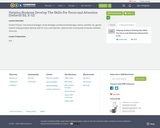
Student Primers, Instructional Strategies, Study Strategies and Recommended Apps, Games, Activities, etc. geared towards helping students develop skills for Focus and Attention. Optional links to thousands of teacher-reviewed resources.

The purpose of the National AEM Center’s Quality Indicators with Critical Components for Higher Ed is to assist institutes of higher education, both at the system and campus level, with planning, implementing, and evaluating systems for providing accessible materials and technologies for all students who need them. Higher Ed institutions, both universities and community colleges, will find the Quality Indicators useful for implementing statutory requirements that mandate equitable access to learning opportunities for students with disabilities, including equal access to printed materials, digital materials, and technologies.

High-Incidence Disabilities are disabilities that are more often seen in the regular education classroom. This resource is intended to be used by pre-service teacher who are learning about disabilities in the classroom and how to make accommodations for all learners.

This is a unique subject area in which there can be numerous variables. The Emergency School Bus Evacuation for Special Needs Students Reference Guide and Test, instructional plan gives an introduction and preparation guidelines. It prepares the learner in procedural steps, lists several scenarios and has an evaluation with an answer key.
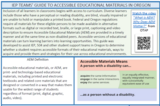
Inclusion of all learners in classrooms begins with access to curriculum. Diverse learners include those who have a perceptual or reading disability, are blind, visually impaired or are unable to hold or manipulate a printed book. Federal and Oregon regulations require all materials for these eligible persons to be made available in alternative formats such as digital or recorded text, braille, or large print, captioning and video description to ensure Accessible Educational Materials (AEM) are provided in a timely manner and at the same time as non-disabled peers. Accessible versions of educational materials can turn learning barriers into learning opportunities. This guide was developed to assist IEP, 504 and other student support teams in Oregon to determine whether a student requires accessible formats of their educational materials, ways to acquire and provide them and strategies for their use across educational environments.
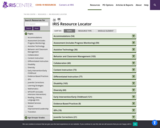
IRIS Resource Locator

Checklist of best practices for creating accessible resources.The Accessibility Checklist is adapted from BC Open Textbook Accessibility Toolkit, CC-BY 4.0 International License.
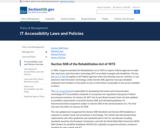
In 1998, Congress amended the Rehabilitation Act of 1973 to require Federal agencies to make their electronic and information technology (EIT) accessible to people with disabilities. The law (29 U.S.C § 794 (d)) applies to all Federal agencies when they develop, procure, maintain, or use electronic and information technology. Under Section 508, agencies must give disabled employees and members of the public access to information comparable to the access available to others.

This interactive and conversational session will focus on increasing awareness of AEM to families of students who receive special education. We’ll talk about barriers that can impede access, such as ableism and bias, and how increasing their knowledge can support their advocacy so their youth receive access and accommodations that create opportunities and possibilities!
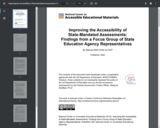
This report provides state leaders and test developers with initial considerations for improving the accessibility of state-mandated assessments for students with disabilities, specifically those who use assistive technology and accessible educational materials in daily instruction. These findings can be used by states to inform the development of policies and guidelines, and by test developers to inform the design of assessment systems and platforms. Most desirable is that the findings will help initiate improved collaboration between and among states, districts, and test developers.

The 2020 GEM Report on 'Inclusion and Education: All means all' calls on countries to concentrate on those being left behind and to move towards inclusion an...

In this guide you will learn about:What makes an educational resource open; Why OERs are important in the practice of Inclusive Design for Learning; How to find and use OERs; How to jump in and make your own OER.

This module is part of a course on Inclusive Educational Practices that offers professional development for educators who aspire to provide a supportive learning environment for dyslexic and with learning difficulties learners.Students have different needs, interests, and abilities. In order to effectively teach them and provide them with rich learning experiences, lesson plans need to be as diverse as they are. This module aims to help educators analyze different learning styles and accordingly build their lesson plans as to embrace and support not only the needs of specific learners but provide quality education for all students. To this end, tools, articles, guidelines, videos, and examples are provided. Planning a lesson for an inclusive classroom entails less modifications for future use in a different learning context, facilitates a substitute to take over the class, and ensures learning for every child."It is not the disabilities of the students that prevent the implementation of a long effective instructional model, but the environment that is disabling" Katz, 2015